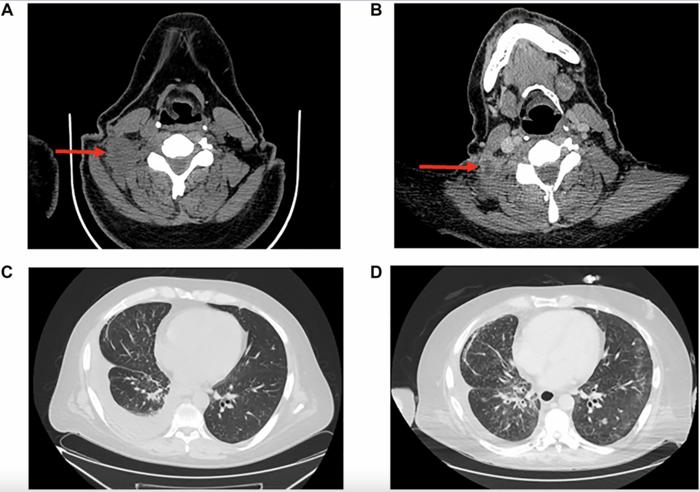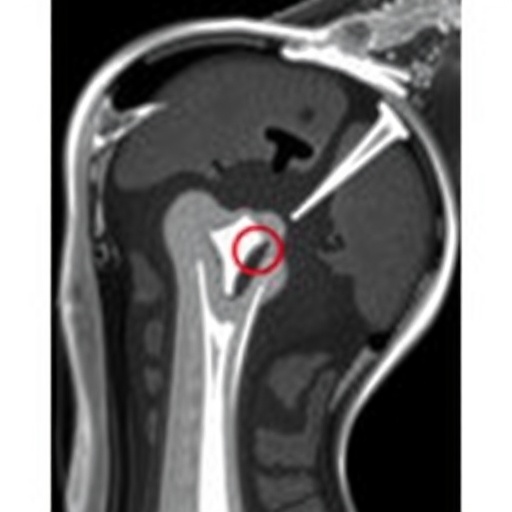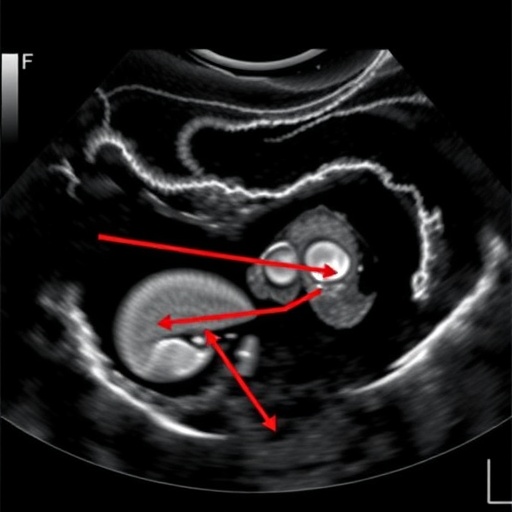
A recent publication details a compelling case study revolving around a patient diagnosed with stage IV non-small cell lung cancer (NSCLC) characterized by a CD74-ROS1 fusion. This patient initially exhibited a positive response to lorlatinib, a targeted therapy specifically designed to combat cancers with gene rearrangements such as ROS1. However, a noteworthy change occurred after six months; the cancer began to progress, signaling the emergence of drug resistance. This transformation was traced to the acquisition of a newly identified genetic alteration involving a RUFY1-RET rearrangement. The presence of this fusion underscores a significant challenge in cancer treatment—resistance to targeted therapies, which can evolve as the disease progresses.
The case study focuses on a 42-year-old male patient who had never smoked, a demographic often underrepresented in lung cancer discussions. The patient’s initial susceptibility to lorlatinib showcased the drug’s efficacy for patients with ROS1-positive cancers. However, this scenario took a critical turn as the cancer, following a responsive period, exhibited signs of progression, necessitating a deeper investigation into the underlying genetic changes.
The subsequent analyses revealed a novel genetic alteration—the RUFY1-RET fusion—which had not previously been documented as a mechanism of resistance to lorlatinib. This finding adds a layer of complexity to our understanding of how cancers adapt under therapeutic pressure. Such genetic variations pose a formidable challenge, as they underscore the importance of ongoing molecular profiling even after initial treatment success.
The identification of the RUFY1-RET fusion was facilitated through advanced RNA next-generation sequencing (RNA NGS). This innovative technique allows clinicians to identify mutations and fusions that traditional genetic tests might overlook. The significance of this diagnostic advancement cannot be understated, as it underscores the need for continuous genetic testing tailored to detecting resistance mechanisms in cancer therapy.
Following the identification of the RUFY1-RET fusion, the clinical team explored alternative treatment strategies, opting for a combination of lorlatinib and pralsetinib. Pralsetinib is both a selective RET inhibitor and part of a class of therapies specifically targeting oncogenic drivers responsible for driving cancer progression. Remarkably, this combination initially resulted in a temporary stabilization of the cancer, extending the patient’s progression-free survival for approximately four months.
Despite this brief respite, the patient’s condition ultimately deteriorated, reemphasizing the relentless nature of cancer evolution. This case highlights a critical and often overlooked area in cancer treatment—the need for adaptive therapy strategies as tumors demonstrate resilience in the face of targeted interventions.
This case serves as the first documented instance of a RET fusion implicated in resistance to lorlatinib, showcasing the complexity of tumor biology. It signals to medical professionals and researchers the essential need for real-time genomic insight during treatment planning, particularly for patients harboring targetable oncogenic alterations. The insights gained from this case might pave the way for the establishment of more effective, personalized treatment regimens that could potentially enhance outcomes for patients battling advanced cancers.
Moreover, the study brings forth significant implications regarding the standard approach to treating lung cancer with targeted therapies. It emphasizes the necessity for a multidisciplinary approach to understand the various pathways of tumor adaptation and progression thoroughly. As cancer biology grows increasingly complex, the need for collaborative efforts to streamline diagnostic strategies and therapeutic decisions cannot be overstated.
In the landscape of oncological research, real-world case studies such as this one play a pivotal role in advancing our understanding of cancer treatment resistance. These narratives contribute to the collective knowledge base, providing invaluable lessons that assist healthcare providers in formulating evidence-based treatment strategies tailored to individual patients.
Continued exploration of similar cases and advanced genomic methodologies could lead to breakthroughs in overcoming resistance mechanisms, thereby enhancing patient survival rates and quality of life. The challenge of resistance in cancer therapy is not merely an isolated event but rather a widespread phenomenon warranting further investigation and engagement within the broader medical community.
Indeed, patients and clinicians alike face an ongoing battle against cancer’s ability to adapt and evolve. This case report underscores the critical need for vigilance, flexibility, and innovation within cancer care to combat the dynamic and multifaceted nature of oncogenic resistance. By examining and learning from each unique case, researchers and physicians can contribute to the collective arsenal against lung cancer and other malignancies, ultimately striving to improve clinical outcomes for future patients.
As this field continues to unfold, the convergence of technology, medicine, and patient care will undoubtedly yield new opportunities to define and refine approaches toward cancer treatment. These developments affirm that in the fight against cancer, knowledge is not just power—it’s a pathway to hope for countless patients facing the uncertainties of this formidable adversary.
Subject of Research: People
Article Title: Acquired RUFY1-RET rearrangement as a mechanism of resistance to lorlatinib in a patient with CD74-ROS1 rearranged non-small cell lung cancer: A case report
News Publication Date: February 5, 2025
Web References: Oncotarget
References: DOI: 10.18632/oncotarget.28682
Image Credits: Copyright: © 2025 Wu and Iams.
Keywords: cancer, ROS1 rearrangement, RET rearrangement, non-small cell lung cancer, targeted therapy, case report
Tags: cancer treatment resistance mechanismsCD74-ROS1 fusion in NSCLCdrug resistance in lung canceremerging genetic alterations in cancerlorlatinib treatment efficacynon-small cell lung cancer genetic mutationsnovel genetic discoveries in oncologyNSCLC patient demographics and treatment responseRUFY1-RET rearrangementsmoking status and lung cancerstage IV lung cancer case studytargeted therapy challenges





